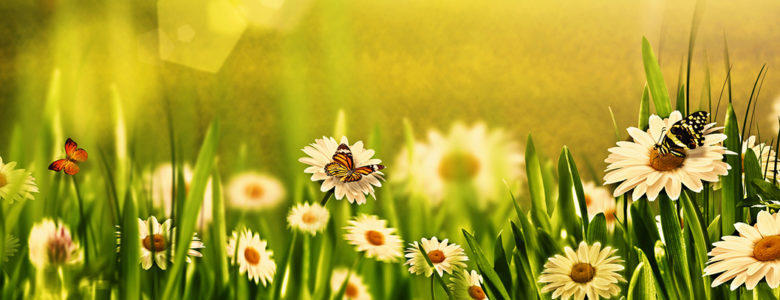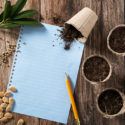Each year Canadian gardeners concern them selves that we are going to experience a long hot summer. The burning question is, “How can I enjoy a great looking garden in the heat?” With more than a few summer gardening seasons under my belt I am here to help.
First of all, don’t sweat it.
What bedtime is to children, water is to plants. You can train them. Kids will understand that there is a particular time of the evening when it is time to go to bed, if parents and care givers are consistent in their expectations. Plants that are watered infrequently and deeply will send down roots into the soil in search of the moisture as temperatures rise, warm winds blow and the timing between summer rainfall stretches out from days into weeks.
You can train plants to expect water only when the soil around their roots dries 3 to 5 cm. below the surface of the soil. This varies from plant to plant, of course, but the point is that if you water your garden a little bit at a time their roots stay up near the surface of the soil waiting for you to stand at the end of your hose each evening. This is ‘water therapy’ for you, but bad training for your plants. This is equally true for perennials, annuals, veggies and even the shrubs and trees on your property. Not to mention your lawn.
Apply generous quantities of water infrequently. Two centimeters of water applied once a week should be plenty, for most plants.
About Your Lawn
Don’t water your lawn at all in a drought situation. Save yourself the time, expense and the resources that are needed to cut your lawn when it is growing actively. It will become brown and dormant but it generally will not die. Dormant is the equivalent of sleeping, dead is dead.
Come mid August your lawn will ‘wake up’ as days get shorter, evening temperatures fall and morning dew heavies up. You don’t need an almanac or a long range weather geek to tell you this. It happens every year just as surely as the earth continues to tilt on its’ axis. This is the reason why every sod grower in the province [and there are a lot of them!] sow their seeds for the next crop between the middle of August and the end of September.
Mid august is a great time of year to sow new grass seed in an effort to thicken your lawn and to spread that important late summer application of slow release nitrogen fertilizer to your lawn. Golfgreen grass seed is excellent quality: produced for Canadians by Canadians.
In the mean time, enjoy your time off.
Trees
Trees need water too, especially considering the weeks of below normal rain fall that we have experienced this summer. Apply water to the root zone of your young and mature trees by placing a hose at the base of the tree with just a trickle of water coming out at the end of it. Leave it there for 3 or 4 hours. The water needs to seep deeply into the root zone for it to be of any good. Applying water to a tree through a lawn sprinkler does not do the job [which is why they are called ‘lawn’ sprinklers]. A ‘tree sprinkler’ is just a plain ol’ garden hose and it does not sprinkle, it dowses over a long period of time.
If you have trees on your property that were planted within the last 3 years, watering is of critical importance this time of year. That said, a mature 20 meter high maple tree transpires over 500 liters of water on a hot day. That is why it is important to get water on its’ roots this time of year. The tree that grows on the boulevard also needs water, even though it may be owned by the municipality – consider it ‘yours’ and water it.
Roses and Shrubs
Hand watering can work for roses and shrubs, but only for the patient gardener. Each rose plant will need between 5 and 10 liters of water once a week to keep them healthy. That is a lot of standing in one place. Be ready to wind down when hand watering as there is no fast-fix for this one.
Vegetable garden
Your vegetable garden needs water this time of year also. Hand watering can work just fine [see ‘Roses and Shrubs’ above] but a good quality sprinkler works if you leave it on long enough. Water restrictions in your area may prohibit this. Back to hand watering….
Other strategies
If you use a well for water or if you live where water restrictions are a realty, consider using gray water. Used dish water from the kitchen sink is perfectly acceptable, from the view point of your plants, on most everything that you grow. Ditto bath water.
A rain barrel is my #1 choice for watering containers as it is charged with oxygen as it falls from the sky and is always warm this time of year. A treat for tender plants like tomatoes and annual flowering plants.
If you are planning on going away for a few days and you do not have a plant sitter that can come in and water your plants for you I recommend that you move containers and hanging baskets out of the sun and into a shaded area of your yard while you are away. Water them thoroughly just before you go and all but the most demanding plants [impatiens are the most demanding] will be fine when you return in 3 or 4 days.
Finally, remember the miracle of mulch. A 6 to 8 centimeter layer of finely ground up cedar or pine bark insulates the soil from the drying effects of the sun and wind, reducing the need for water by up to 70%. I think it is one of the best money and time saving investments that you can make in your garden.



